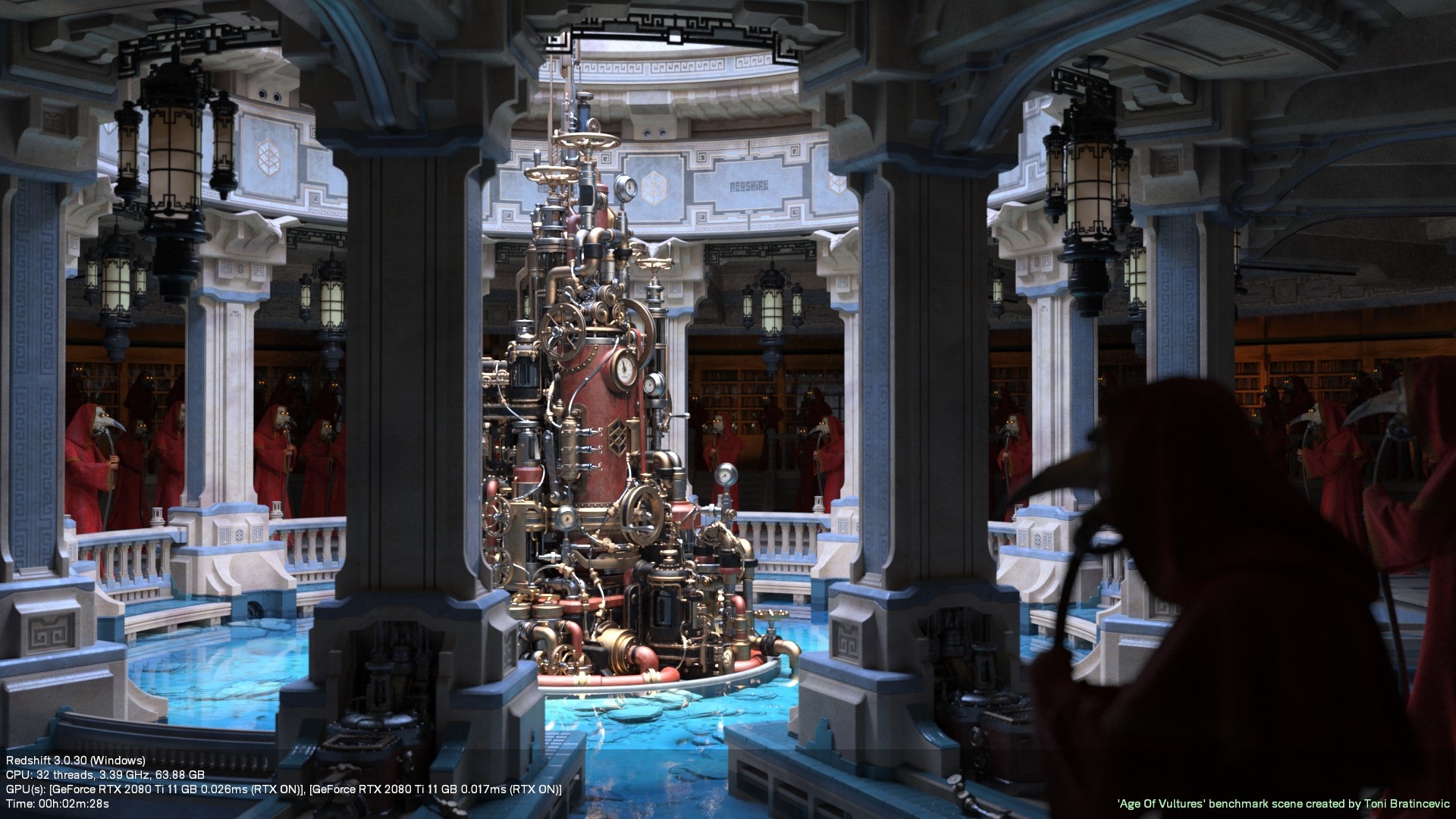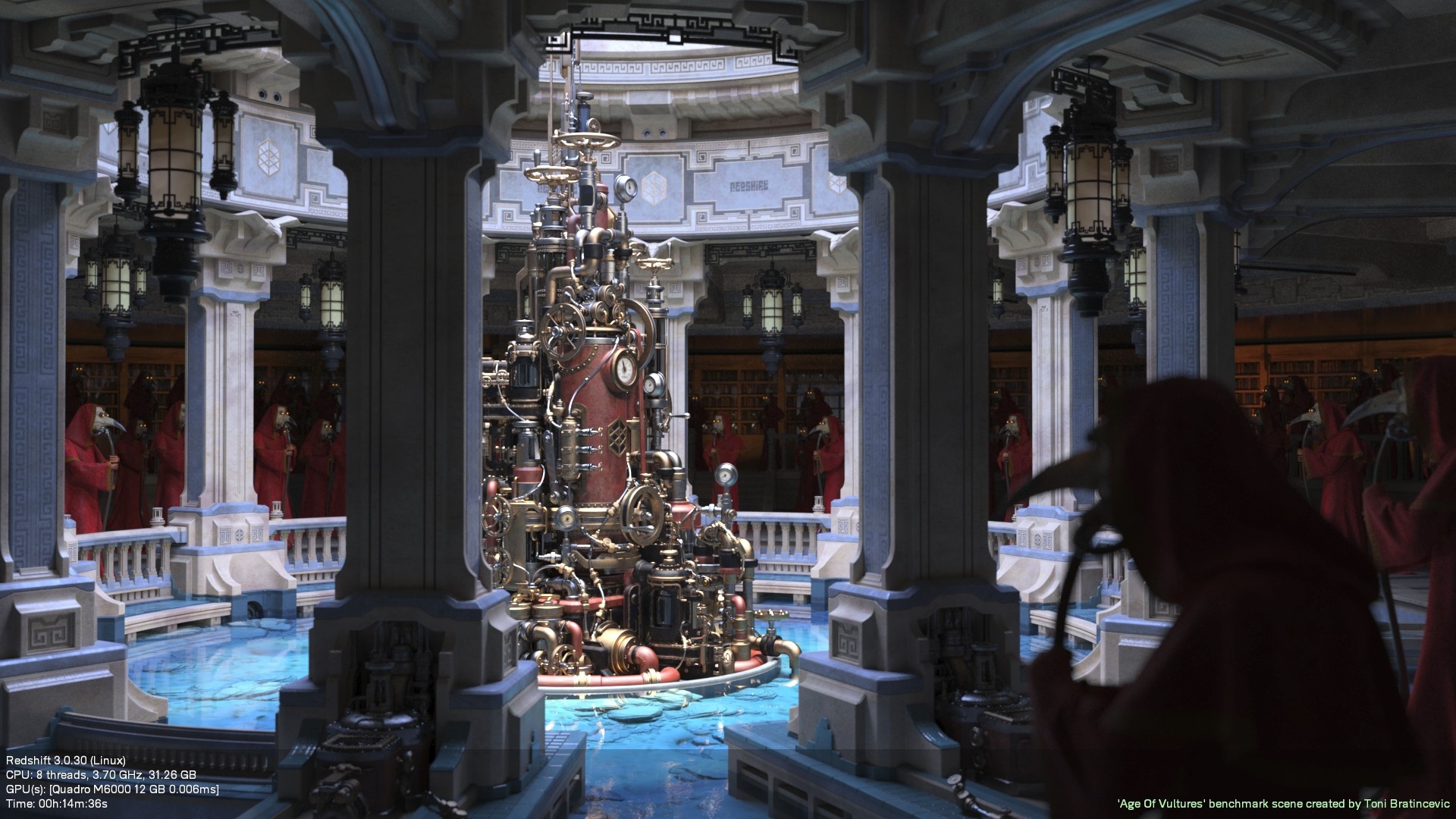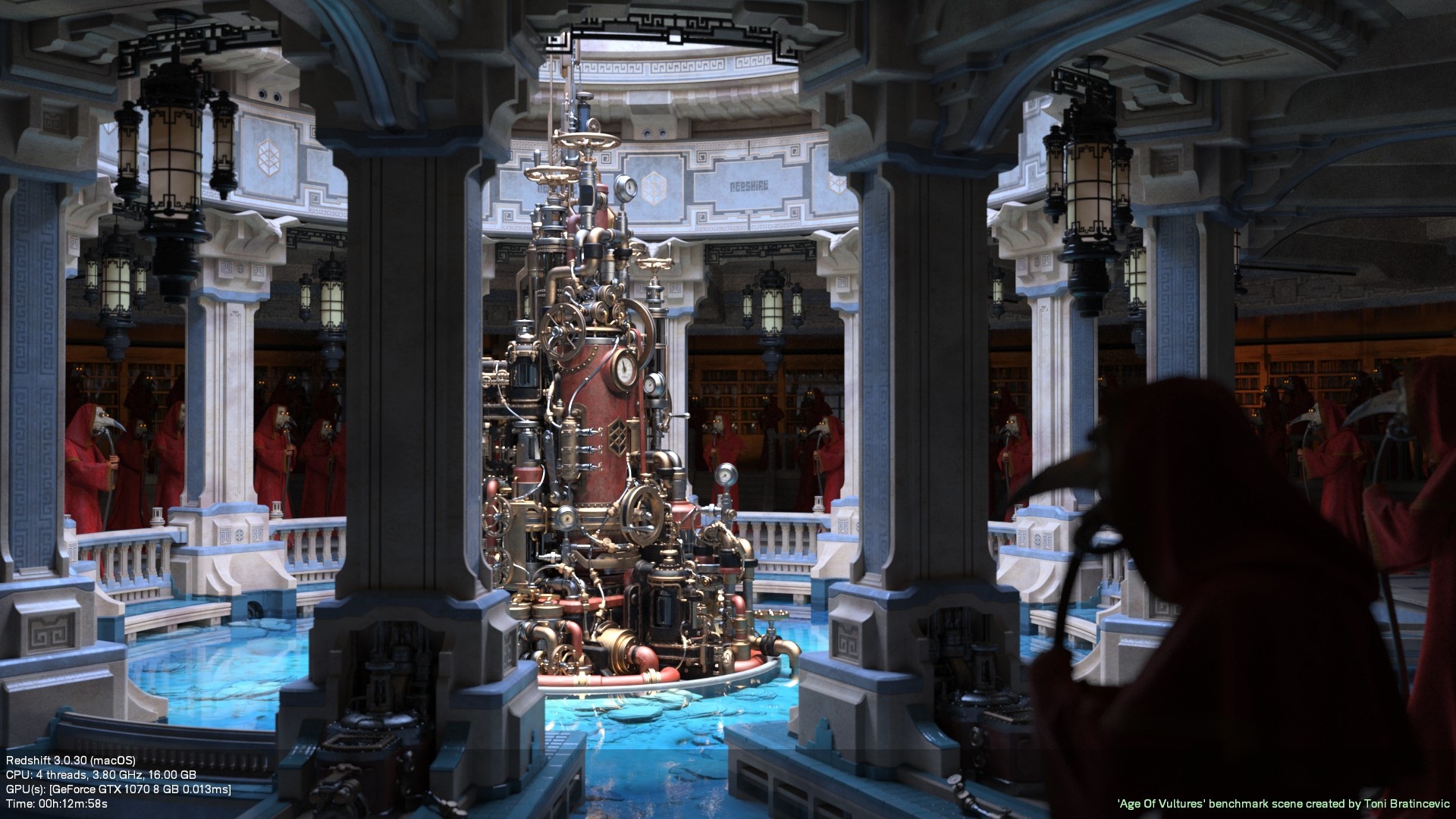The redshiftBenchmark tool is a command-line tool that can load a scene, render it and measures the time it took to render, excluding certain CPU operations such as loading the scene or textures from disk. It prints out certain information about the GPU configuration on the screen and also as a watermark in the resulting rendered image which is saved on disk.
Table Of Contents
- How To Run It
- How To Use A Subset Of GPUs
- How To Disable RTX
- How To Use Different Block Sizes
- How To See Other Benchmark Results And Post Your Own
How To Run It
The Redshift Benchmark is currently a command-line tool. In the future, it will be converted to a GUI utility.
To run it on Windows
To run the Redshift Benchmark on Windows, please open a command prompt by clicking the windows icon on the bottom left of your desktop, typing "cmd" and then pressing enter.
Then, in the window that opens, type the following and press enter at the end of each line
cd C:\ProgramData\Redshift\bin
RunBenchmark.bat
Redshift at that point will attempt to download the Redshift "Vultures" Benchmark scene from our online server, unzip it and begin rendering.
Once the rendering has finished, it will print something like this:
Result:
Redshift 3.0.30 (Windows)
CPU: 32 threads, 3.39 GHz, 63.88 GB
GPU(s): [GeForce RTX 2080 Ti 11 GB 0.027ms (RTX ON)], [GeForce RTX 2080 Ti 11 GB 0.017ms (RTX ON)]
Time: 00h:02m:28s
It will also save a redshiftBenchmarkOutput.png image on the same C:\ProgramData\Redshift\bin folder which, once opened, should look like this:

To run it on Linux
To run the Redshift Benchmark on Linux, please open a terminal window and then type the following and press enter at the end of each line
cd /usr/redshift/bin
sh runBenchmark.sh
Redshift at that point will attempt to download the Redshift "Vultures" Benchmark scene from our online server, unzip it and begin rendering.
Once the rendering has finished, it will print something like this:
Result:
Redshift 3.0.30 (Linux)
CPU: 8 threads, 3.70 GHz, 31.26 GB
GPU(s): [Quadro M6000 12 GB 0.006ms]
Time: 00h:14m:36s
It will also save a redshiftBenchmarkOutput.png image on the same /usr/redshift/bin folder which, once opened, should look like this:

To run it on macOS
To run the Redshift Benchmark on macOS, please open a terminal window by opening the Launchpad, typing "Terminal" and pressing enter.
Next, in the window that opens, type the following and press enter at the end of each line
cd /Applications/redshift/bin
sh runBenchmark.sh
Redshift at that point will attempt to download the Redshift "Vultures" Benchmark scene from our online server, unzip it and begin rendering.
Once the rendering has finished, it will print something like this:
Result:
Redshift 3.0.30 (macOS)
CPU: 4 threads, 3.80 GHz, 16.00 GB
GPU(s): [GeForce GTX 1070 8 GB 0.013ms]
Time: 00h:12m:58s
It will also save a redshiftBenchmarkOutput.png image on the same
/Applications/redshift/bin folder which, once opened, should look like this:

How To Use A Subset Of GPUs
In the examples below, the redshiftBenchmark tool is used with the "Vultures" scene. That scene will only exist on your disk after you've run the RunBenchmark script. That scripts downloads that scene from our online servers and unzips it to the folder shown below.
By default, the Redshift Benchmark uses all the GPUs on your system. If you would like to render with a subset of GPUs, you can run it directly and not via the .bat or .sh files. This will allow you to pass extra parameters, like the "-gpu" one.
Windows
redshiftBenchmark RedshiftBenchmarkScenes/vultures/Vultures.rs -gpu 0
Linux/macOS
./redshiftBenchmark RedshiftBenchmarkScenes/vultures/Vultures.rs -gpu 0
The above will render the vultures benchmark scene using only the first GPU (i.e. GPU "0")
If you wanted to use the first two GPUs instead, you could pass "-gpu 0 -gpu 1" instead.
How To Disable RTX
In the examples below, the redshiftBenchmark tool is used with the "Vultures" scene. That scene will only exist on your disk after you've run the RunBenchmark script. That scripts downloads that scene from our online servers and unzips it to the folder shown below.
By default, the Redshift Benchmark will use RTX (hardware ray tracing) technology if your GPU support it.
To disable it, you can pass the "-nortx" pameter, as follows
Windows
redshiftBenchmark RedshiftBenchmarkScenes/vultures/Vultures.rs -nortx
Linux/macOS
./redshiftBenchmark RedshiftBenchmarkScenes/vultures/Vultures.rs -nortx
How To Use Different Block Sizes
By default, the Redshift Benchmark uses a block size (aka "bucket size" : see System - Advanced) of 128x128 pixels. To use different bucket sizes, use the "blocksize" parameter. Below is an example using 256x256 pixel buckets. The valid values for this parameter are 64, 128, 256 and 512.
Windows
RunBenchmark.bat -blocksize 256
Linux/macOS
sh runBenchmark.sh -blocksize 256
How To See Other Benchmark Results And Post Your Own
You can see other users' results in this forum thread: https://www.redshift3d.com/forums/viewthread/12843/
Please read the first post of that thread and follow the instructions there before posting your results.
Or simply look at what the other users have posted! ![]()